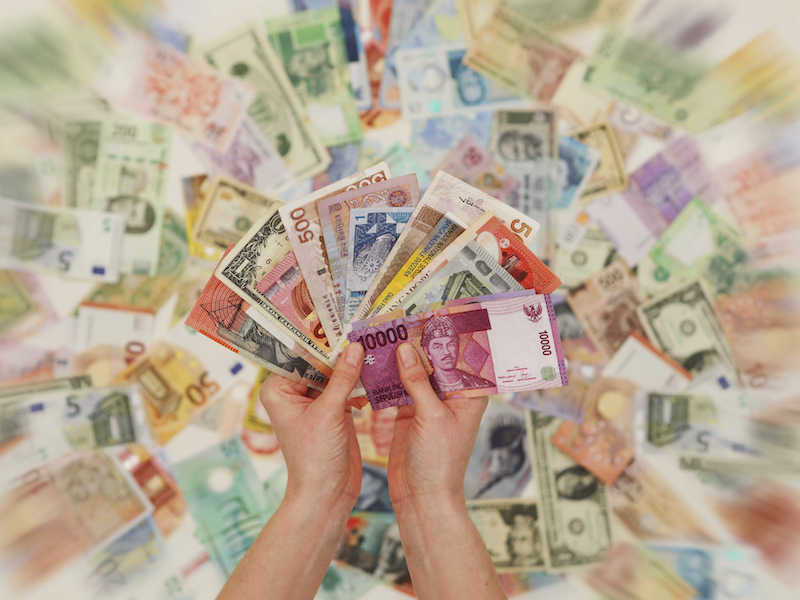

Hedges, research and patience can reduce currency volatility
Portfolio manager Anujeet Sareen says taking a longer-term view on global currencies allows investors to take advantage of opportunities
- Featuring: Anujeet Sareen
- November 23, 2021 November 22, 2021
- 13:01

(Runtime: 4:57. Read the audio transcript.)
**
Research and patience are key tools for currency investors, says Anujeet Sareen, a portfolio manager with Brandywine Global Investment Management.
Sareen said currencies are notoriously volatile, so it pays to stay attentive when contemplating investments.
“Having a disciplined approach that is very patient until you reach a valuation extreme is important,” he said. “That means having a longer-term view on how to invest in currencies and take advantage of the opportunity that presents itself.”
According to Sareen, what is true of stocks and bonds is also true of currency.
“Markets overshoot. The real advantage, we would argue, is to understand how to invest during those overshoots,” he said. “And for us, what research is about is not only to identify what currencies are at a valuation extreme, but to understand how it’s affecting the economy. What’s the feedback loop that’s going to allow you to realize that upside opportunity?”
In the case of the Mexican peso a few years back, for example, a drop in value was attributed to fears of what a Trump presidency might mean for the North American Free Trade Agreement, combined with a hardline approach to business taken by the incoming Mexican president Andrés Manuel López Obrador. Sareen and his team judged these concerns to be overblown, and their investment in the peso turned out well following a big improvement in Mexico’s trade balance, an increase in the number of Americans going there on vacation, a rise in inflation and, ultimately, a rise in interest rates.
“The Mexican peso has been the best performing currency in the world the last five years,” Sareen said, adding that there are similar stories to be found elsewhere.
He suggested a number of emerging-market currencies remain undervalued as Covid makes its slow retreat. Economies that are still challenged by strains on their medical systems and shortages of Covid vaccines are taking longer for their currencies to recover, leading to opportunities for investors.
“This is true of a number of Latin American currencies,” he said. “Not just the Mexican peso, but currencies like the Chilean peso, the Brazilian real — these currencies are undervalued today.”
These countries are poised for economic growth, he said, but markets have been hesitant because Covid risks remain.
“You are seeing quite a notable improvement in trade performance in Brazil; you’ve seen the central bank in Brazil raise rates now several hundred basis points in the last several months. The Chileans have started to go down that path as well — so you’re seeing the kinds of steps that we like to see that would ultimately support currency performance,” he said. “Until those places hit some type of herd immunity, I think people are still hesitating to make those investments.”
Sareen believes similar opportunities can also be found in Eastern Europe, particularly Hungary and Poland, which have strong economies. The Hungarian central bank has started to raise interest rates. And Poland has raised rates twice in the past two months.
But not all emerging markets are created equal, Sareen warned.
Governance issues overshadow currency opportunities in countries such as Turkey and Argentina, he said. While the Turkish lira and Argentinian peso appear to be undervalued, investment is just too risky, he said, given the unorthodox economic policies in those regions, growing default risk and politicized central banks.
“In the case of Turkey and also Argentina, the biggest constraint really is governance,” he said. “Governance factors really dissuade us from having exposure there.”
Sareen said currency hedging plays an important role in his investment strategy.
“If you’re going to buy securities in different markets around the world, we would argue one’s default position would be to hedge that exposure,” he said. “Our decision to hedge the currency will depend upon how strong a view we have on the currency. If we think there’s two-way risk or perhaps even downside risk, we’re really going to look to hedge that exposure and mitigate the volatility, even if it comes at a cost.”
**
This article is part of the Soundbites program, sponsored by Canada Life. The article was written without sponsor input.
